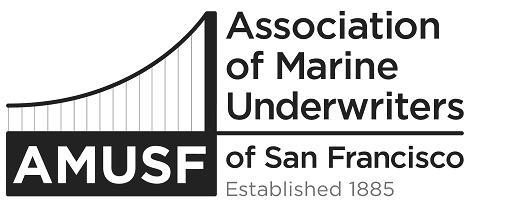V
/Valuation Clause
The clause in the Marine Policy that contains a consistent basis of valuation agreed upon by the Assured and the insurance company and which establishes the insured value of the cargo or vessel when the insurance attaches. See "Dual Valuation Clause."
Valued Policy
A policy in which the insured value of the property insured has been agreed between Assured and insurance company when the policy attaches rather than after a loss has occurred; as opposed to an Actual Cash Value policy.
Vanning
The loading of cargo into a container or van.
Ventilated Container
A container designed with openings in the side and/or end walls to permit the exchange of inside and outside air when the container doors are closed.
Venture - See "Adventure."
Vessel
Watercraft of every description used as a means of transporting people or cargo from place to place on navigable waters. See "Vessel Types" Appendix F.
Vessel Movement (caused by the action of the waves as the vessel moves through the water)
A vessel at sea may move in six different directions at the same time:
Heave - Rise or fall of the entire vessel.
Surge - Forward or aft movement of the entire vessel.
Sway - Sideways movement of the entire vessel.
Pitch - Rise and fall motion (bow and stern) on the width center axis.
Roll - Side to side (port and starboard) rocking motion on the length center axis.
Yaw - Port and starboard twisting motion on the vertical center axis.
The tendency of a floating vessel to return to its original upright position of equilibrium after being tipped by the forces of wind and sea. In order to maintain its stable upright position a vessel s Center of Gravity must lie vertically below its Metacenter on the Center of Buoyancy line.
Center of Gravity - The central point around which the total mass or weight of a vessel and its cargo is evenly distributed and balanced. The point at which all of the downward forces of a vessel s weight can be considered to act. If the Center of Gravity is low the vessel is "stiff." If the Center of Gravity is high the vessel is "tender" and tends to roll more in the waves. If the Center of Gravity is too high the vessel s stability decreases and it could capsize. The Center of Gravity is "C" on the diagram below.
Center of Buoyancy Line - The vertical line at which all of the upward forces of the water s support (buoyancy) can be considered to act. The center plane of a vessel; "A" on the diagram below when it is floating upright, and "B" when slightly tipped.
Metacenter - The highest point to which the Center of Gravity may rise and still permit a vessel to have positive stability; "M" on the diagram below. The Metacenter must be above the Center of Gravity, or the vessel would be top-heavy and capsize.
C - Center of Gravity (point)
A - Center of Buoyancy Line of a floating vessel
B - Center of Buoyancy Line when a vessel is tipped
M - Metacenter (point) at the intersection of verticals MA and MB
Voluntary Settlement Conference (VSC) -See "Alternative Dispute Resolution."
Voyage
1. A vessel's journey by sea from one port to another. A "round voyage" would be a vessel's journey from its Home Port through all of its Ports-of-Call and return to its Home Port.
2. The journey of cargo from its point of origin to its final destination.
Voyage Charter - See "Charter Party."
VSC (Voluntary Settlement Conference) - See "Alternative Dispute Resolution."



